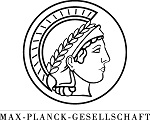Team:Goettingen/Project
From 2012.igem.org
| Line 592: | Line 592: | ||
<table> | <table> | ||
<tr><td> | <tr><td> | ||
| - | <p align="justify" style="line-height:1.6em">A two-component system consists of a sensory histidine kinase and a phosphorylable response regulator [2] (Fig 1). Transfer of the phosphate group from a histidine residue of the kinase domain to an aspartate residue of the response regulator activates the output domain. This normally results in activation of gene expression. <br> | + | <p align="justify" style="line-height:1.6em">A two-component system consists of a sensory histidine kinase and a phosphorylable response regulator [2] (Fig 1). Transfer of the phosphate group from a histidine residue of the kinase domain to an aspartate residue of the response regulator activates the output domain. This normally results in activation of gene expression. <br><br> |
Beside the aspect that the sensing in E. coli is coupled to flagella-based motion, the two-component system is more complex. There are five histidine-kinase-associated chemotaxis receptors of E. coli known. The receptors are typically arranged as a trimeric application of dimeric receptor subunits (trimers of dimers) that are spanning through the membrane. The receptors are methyl-accepting chemotaxis proteins (MCPs) that are directly associated with CheA, a histidine autokinase and CheW, an adaptor protein that couples CheA to the receptor protein. <br> | Beside the aspect that the sensing in E. coli is coupled to flagella-based motion, the two-component system is more complex. There are five histidine-kinase-associated chemotaxis receptors of E. coli known. The receptors are typically arranged as a trimeric application of dimeric receptor subunits (trimers of dimers) that are spanning through the membrane. The receptors are methyl-accepting chemotaxis proteins (MCPs) that are directly associated with CheA, a histidine autokinase and CheW, an adaptor protein that couples CheA to the receptor protein. <br> | ||
| - | There are two conformational states of receptor kinases possible: the kinase-on and kinase-off state [3]. In kinase-off state the counter-clockwise (CCW) rotation is active, which leads to forward swimming. In the kinase-on state CheA autophosphorylation is activated due to repellent binding whereas in the kinase-off state autophosphorylation is inactive due to attractant binding (Fig 3). <br> | + | There are two conformational states of receptor kinases possible: the kinase-on and kinase-off state [3]. In kinase-off state the counter-clockwise (CCW) rotation is active, which leads to forward swimming. In the kinase-on state CheA autophosphorylation is activated due to repellent binding whereas in the kinase-off state autophosphorylation is inactive due to attractant binding (Fig 3). <br><br> |
| - | In the case of kinase-on state, the autophosphorylated CheA transfers a phosphate group to one of the two response regulators,CheY and CheB.CheY is responsible for motor control by binding to the flagellar rotary motor. This results in clockwise (CW) rotation, which is visible as random directional movement. CheZ, a phosphatase, dephosphorylates CheY to keep random movement low (Fig 3). <br> | + | In the case of kinase-on state, the autophosphorylated CheA transfers a phosphate group to one of the two response regulators,CheY and CheB.CheY is responsible for motor control by binding to the flagellar rotary motor. This results in clockwise (CW) rotation, which is visible as random directional movement. CheZ, a phosphatase, dephosphorylates CheY to keep random movement low (Fig 3). <br><br> |
| - | The methylesterase CheB and methyltransferase CheR are counterplayers in sensory adaptation. Here, the MCPs play a crucial role. Both MCP sites have glutamines in their structure. These are functional mimics of methyl glutamates. In the case of CheB is bound to a phosphate group from CheA, it mediates deamidation of glutamines to methyl-accepting glutamates. Therefore the receptor is in the off-state with a high attractant affinity and it is likely to be methylated but not demethylated [3]. Because the kinetics of methylation and demethylation are relatively slow, adaptation can take tens to hundreds of seconds [2].<br> | + | The methylesterase CheB and methyltransferase CheR are counterplayers in sensory adaptation. Here, the MCPs play a crucial role. Both MCP sites have glutamines in their structure. These are functional mimics of methyl glutamates. In the case of CheB is bound to a phosphate group from CheA, it mediates deamidation of glutamines to methyl-accepting glutamates. Therefore the receptor is in the off-state with a high attractant affinity and it is likely to be methylated but not demethylated [3]. Because the kinetics of methylation and demethylation are relatively slow, adaptation can take tens to hundreds of seconds [2].<br><br> |
| - | All in all, E. coli switches from tumbling to swimming when it is surrounded by a gradient of attractants. Increased attractant stimulation results in both, terminating tumbling and activation of swimming towards the attractants [2]. | + | All in all, E. coli switches from tumbling to swimming when it is surrounded by a gradient of attractants. Increased attractant stimulation results in both, terminating tumbling and activation of swimming towards the attractants [2].<br> |
</p> | </p> | ||
</td></tr> | </td></tr> | ||
| + | <tr><td> | ||
| + | <img src="https://static.igem.org/mediawiki/2012/d/d8/Goe_chemo3.png"><br> | ||
| + | <b>Figure 3 Molecular mechanism of tumbling and swimming. Activated CheA transfers a phosphate group to CheY thus activating clockwise (CW) rotation which leads E. coli tumble. CheZ dephosphorylates CheY to activate counter-clockwise (CCW) flagella rotation that results in swimming.</b><br> | ||
| + | </td></tr> | ||
<tr><td> | <tr><td> | ||
| + | <img src="https://static.igem.org/mediawiki/2012/d/d8/Goe_chemo4.png"><br> | ||
| + | <b>Fig 4 Structure of E. coli chemoreceptor Tar. Left: Ribbon diagram and chematic show of the 3D structure of Tar [3]. Right: Detail view of the 3D structure ligand binding domain of Tar (PDB file: 1WAT).</b> | ||
| + | </td></tr> | ||
| + | |||
| + | <tr><td> | ||
| + | <b>Tar chemoreceptor of E. coli</b><br> | ||
| + | The aspartate receptor Tar (taxis to aspartate and repellents) is one member of five classical methyl-accepting chemotaxis proteins in E. coli (Aer, Tar, Tsr, Trg and Tap) that mediate chemotactic response. The whole chemoreceptor is build of three parts: a transmembrane sensing domain, a signal conversion domain and a kinase control domain (Fig 4). The transmembrane sensing domain of Tar is a four helix bundle where one bundle consists of two antiparallel helices [3]. <br><br> | ||
| + | Tar is able to sense aspartate in a high sensitive manner and a lower sensitivity for glutamate and other compounds is known [3]. The ligand binding site involves some aminoacid residues of four helices. Binding of the ligand causes a conformational change. The signal is then transmitted across the membrane through the signal conversion domain to the kinase control domain (Koshland et al. 2001) which leads to flagellar motion.<br><br> | ||
| + | |||
| + | <b>Sensory molecules</b><br> | ||
| + | Sensory molecules are organic or inorganic agents that can be divided into two groups: chemoattractants and chemorepellents. Chemoattractants are molecules like aminoacids, organic or inorganic acids, small peptides or chemokines. They induce the active motion of the bacteria towards the highest concentration of the attractant (Fig 5). | ||
| + | Chemorepellents have a danger signaling function. If bacteria recognize repellents, they swim away from the source of repellents (Fig 5). <br><br> | ||
| + | Sensory molecules can be recognized by various receptors. E. coli has five of these receptors: Aer for sensing oxygen, Tar for sensing aspartate and repellents, Tsr for sensing serine and repellents, Trg for sensing ribose and galactose and Tap for sensing dipeptides. Rreceptors are able to mediate taxis to other sensory molecules as well but with lower affinity. Therefore we try to find new recpetors by mutagenesis of the sensory molecule binding site of Tar. | ||
</td></tr> | </td></tr> | ||
| + | |||
| + | |||
| + | <tr><td> | ||
| + | <img src="https://static.igem.org/mediawiki/2012/d/d8/Goe_chemo4.png"><br> | ||
| + | <b>Figure 5 Reaction of E. coli to chemoattractants and chemorepellents. E. coli swims towards the highest concentration of the chemoattractant or away from the highest concentration of the chemorepellent.</b> | ||
| + | </td></tr> | ||
| + | |||
| + | |||
| + | <tr><td> | ||
| + | [1] Madigan M. T., Martinko J. M., Stahl D. A., Clark D. P. (2012). Brock Microbiology. Vol. 13. Pearson, San Francisco, pp. 78 – 80.<br> | ||
| + | [2] Sourjik V., Armitage J. P. (2010). Spatial organization in bacterial chemotaxis. EMBO J.<br> | ||
| + | [3] Hazelbauer G. L., Falke J. J., Parkinson J. S. (2008). Bacterial chemoreceptors: high-performance signaling in networked arrays. Trends Biochem Sci. <br> | ||
| + | [4] Koshland<br> | ||
| + | |||
| + | </td></tr> | ||
| + | |||
| + | |||
| + | <tr><td> | ||
| + | |||
| + | </td></tr> | ||
| + | |||
| + | |||
| + | |||
</table> | </table> | ||
</p> | </p> | ||
Revision as of 23:54, 24 August 2012

|
Language:
| Our Project
Our project was born from the idea to create a real champion: the fastest E. coli in the world. As funny as this may sound at first, soon we were at the development of an ambitious plan to create our "Homing Coli" and apply its speed for selective purposes. The ultimate goal was a fast swimming E. coli strain which would be able to recognize specific molecules on a mutagenized receptor and head towards gradients of these substances on swimming agar plates. If this approach worked, it might be put to use for the recognition of various molecules such as pollutants, toxins or even cancer cell markers. As our planning moved on, we soon created three different focus groups which should work in parallel on the biggest and most crucial components of our project.
| Chemotaxis
| Poster
|
↑ Return to top
Team Göttingen Sponsors and Supporter |
 |  |



|
 "
"



